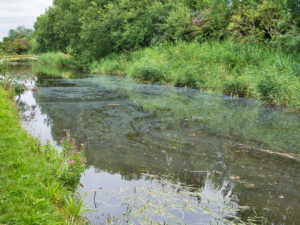Kent, the southeasternmost county in England, is affectionately known as the “Garden of England” due to its abundance of orchards and hop gardens. In recent years, this verdant county has also become renowned as the warmest county in the UK, a title that comes with both challenges and opportunities.

The Met Office’s climate records indicate that Kent consistently experiences higher average summer temperatures compared to other regions in the UK. In the heatwave of 2019, Kent registered temperatures of 38.1 degrees Celsius in Faversham, just shy of the national record. These escalating temperatures have become a standard feature of Kent’s summer months, and they extend beyond the heat of the day. Kent also records warmer night-time temperatures, providing little respite from the intense heat.
This weather trend has numerous implications for the county. On the one hand, the warmer climate has proven advantageous for specific industries, such as viticulture. Kent’s vineyards, already renowned for their quality, have seen a boost in both the quantity and quality of their grape harvests. The warmer climate has facilitated the growth of varieties typically associated with continental Europe, such as Pinot Noir and Chardonnay. As a result, Kentish wines, particularly its sparkling wines, are gaining international recognition for their excellence.

However, the warmer climate also brings its share of challenges. For one, Kent’s agricultural sector has had to grapple with the implications of the hotter weather. While some crops thrive in the heat, others suffer. Traditional staples such as apples and hops may face stress due to the excessive heat and lack of water, which could impact yields and the local economy dependent on them.
Additionally, Kent’s ecosystem is also feeling the heat. Rising temperatures can disturb the delicate balance of local ecosystems, affecting wildlife and plant life. For instance, native species that thrive in cooler climates may be pushed out, and invasive species better adapted to the heat may take their place, which could have significant long-term impacts on biodiversity.

Public health in Kent is another concern, especially considering the large elderly population in the county. The lack of a culture accustomed to such high temperatures, coupled with a lack of infrastructure designed to deal with it, can make heatwaves particularly dangerous for the most vulnerable.
In response to these rising temperatures, Kent County Council has been proactive in tackling the impact of climate change. The council has developed a Climate Change Action Plan that sets out how they intend to achieve net-zero emissions by 2030. The plan outlines strategies in several key areas, including energy, transportation, waste, and adaptation measures.

The county is also investing in educational initiatives aimed at increasing public awareness about the impact of climate change and promoting sustainable practices. These include conservation efforts, promoting water efficiency, and encouraging the use of public transportation and cycling over car usage.
Kent is seeing a growth of water sports over the past several decades and now Surfing is seen as a stable part of coastal life as well as Paddleboarding too, It would be hard to find a Kent spot without someone in the water having fun. The locals refer to the county as Costa Del Kent as its chalk fields turn to dust in the summer, and it starts to have an air of the continent with its wines and glorious sandy and pebble beaches too.

Kent’s standing as the UK’s warmest county is a testament to the real and tangible effects of climate change. As the county navigates its way through the opportunities and challenges that this new reality presents, it provides a case study for other regions facing similar climatic shifts. The key to Kent’s resilience lies in its ability to adapt and innovate in the face of this new normal while continuing efforts to mitigate the impacts of climate change.





